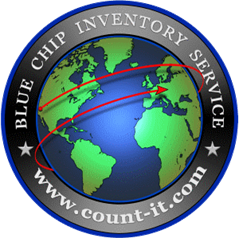
As with anything else in business, there is a right way and a wrong way to manage inventory. Many businesses make the same mistakes that ultimately cost time, money and aggravation. The good news is, most of these routine errors can easily be avoided, provided you are aware of what to watch for. Let’s take a look at some of the most common inventory management blunders to avoid making in your own organization.
Being Reactive vs. Proactive – If you’re basing your inventory planning on things like back order reports, you’re going to always find yourself chasing your tail. In today’s world, those who are successful at managing inventory take a proactive approach to planning. Leveraging forecasting tools to your advantage will help you better prepare for future demands.
Not Using the Right System – Using an Excel spreadsheet to manage your inventory may have worked when you first started your business, but chances are you’ve well-outgrown its limited functionality. If you want to improve your inventory management performance, you must consider investing in a tool or software that is designed specifically for that purpose. Otherwise, costly mistakes are inevitable.
Using Unqualified Personnel – Let’s face it, not everyone is cut out to handle the complexities of inventory management. Unless you plan on extensively training underqualified employees, you should stick to hiring only those who have experience and proven ability to successfully manage inventory. Saving money on salary will likely come back to bite you in costly errors, so invest wisely.
Lack of Communication – Inventory management may fall within one particular department, but it’s something that should be collaborative with other areas of the organization. For instance, sales and operations depend heavily on accurate inventory. For that reason, communication among various groups and departments should be open and ongoing.
Discounting Forecast Management – Forecasting is not something to be taken lightly, yet many businesses treat it like an afterthought. The truth is, forecast management is a full-time job and should be treated as such. Assign one or two designated employees and implement and maintain forecast accuracy measures.
Not Communicating with Customers – There’s nothing more stressful than that huge, unexpected purchase order. Suddenly you risk running out of inventory and failing to meet the demand. Most of the time, these types of situations can be avoided by keeping the lines of communication open with customers. This will allow you to understand and anticipate their needs more effectively.
Treating All Items Equally – In reality, your best-selling products are more important than those ancillary ones, so why would you treat both the same way? Managing each item based on its overall value to your total inventory is a much better way to stay on top of your levels and consistently meet customer expectations.
Becoming Stagnant – While the old “if it ain’t broke, don’t fix it” adage may be true to some degree, it’s important that your inventory management practices don’t become too stagnant. In reality, systems become obsolete and strategies change. To stay ahead of the game, your approach to inventory management should be fluid and capable of evolving as needed. Don’t be afraid to try new things.
While these 8 common mistakes can really derail your inventory management strategy, the biggest mistake is not getting help when it’s needed. If you’re finding yourself struggling with developing or implementing an effective inventory system or you just can’t handle this task on your own, give us a call. We can get you back on track in no time.


This calculator can help you determine the selling price for your products to achieve a desired profit margin. Try It Free >
Our Audit/Verification Service is available globally - from Thousand Oaks, CA to Timbuktu. Learn More >
Don't just take our word for it. Find out what our clients are saying about our services.
See actual testimonials >
From Retail and Gross Margin Inventory reports, to SKU and Price Verification reports, Blue Chip Inventory provides complete inventory service. See samples >






